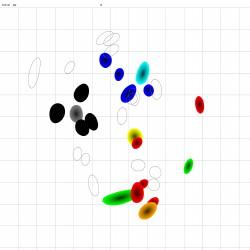 Enterovirus-71 (EV-71) is another example of an antigenically variable pathogen, where surveillance is critical for early detection and prevention of outbreaks. First isolated in California in 1969, EV-71 has been the cause of numerous outbreaks of hand, foot and mouth disease, which can cause severe neurological disease, most recently becoming prevalent around the Asia-Pacific region.
Enterovirus-71 (EV-71) is another example of an antigenically variable pathogen, where surveillance is critical for early detection and prevention of outbreaks. First isolated in California in 1969, EV-71 has been the cause of numerous outbreaks of hand, foot and mouth disease, which can cause severe neurological disease, most recently becoming prevalent around the Asia-Pacific region.
Outbreaks can vary being small and localised ones to large epidemics, with hundreds of thousands of people being infected. In Taiwan, the reemergence of EV-71 in 2008 resulted in the largest outbreak in the country for the past 11 years. Several molecular epidemiology studies of EV-71 have revealed the genetic evolution of EV-71 isolates by using partial- or whole-genome sequencing. However, little had been reported about the antigenic evolution of EV-71.
In a 2009 study in collaboration with colleagues in Taiwan, we used antigenic cartography to analyse samples from over 15 years of outbreaks. This analysis revealed that the re-emerging EV-71 strains formed a separate cluster which was antigenically distinct from previous strains. Vaccines against EV-71 are now in development, and we are involved in the evaluation of EV-71 vaccine clinical trials and selection of vaccine strains.
Publication:
Sheng-Wen Huang, Yun-Wei Hsu, Derek J. Smith, David Kiang, Huey-Pin Tsai, Kuei-Hsiang Lin, Shih-in Wang, Ching-Chung Liu, Ih-Jen Su and Jen-Ren Wang J. Clin. Microbiol. November 2009 vol. 47 no. 11 3653-3662
